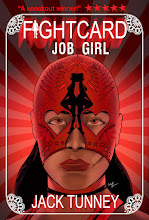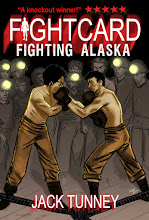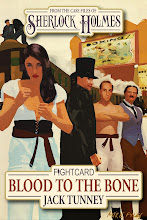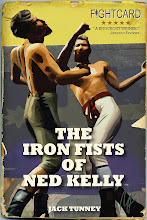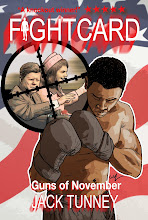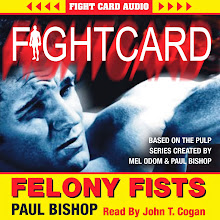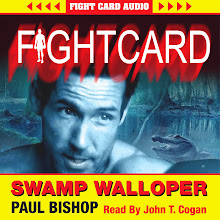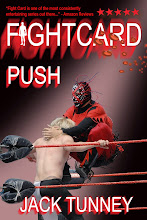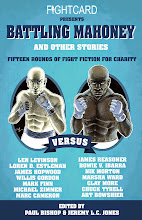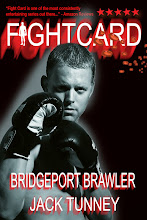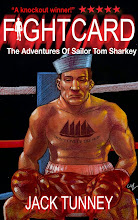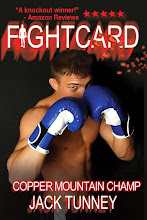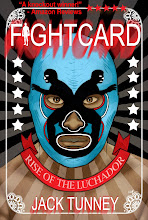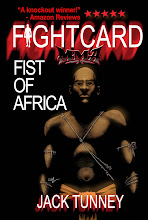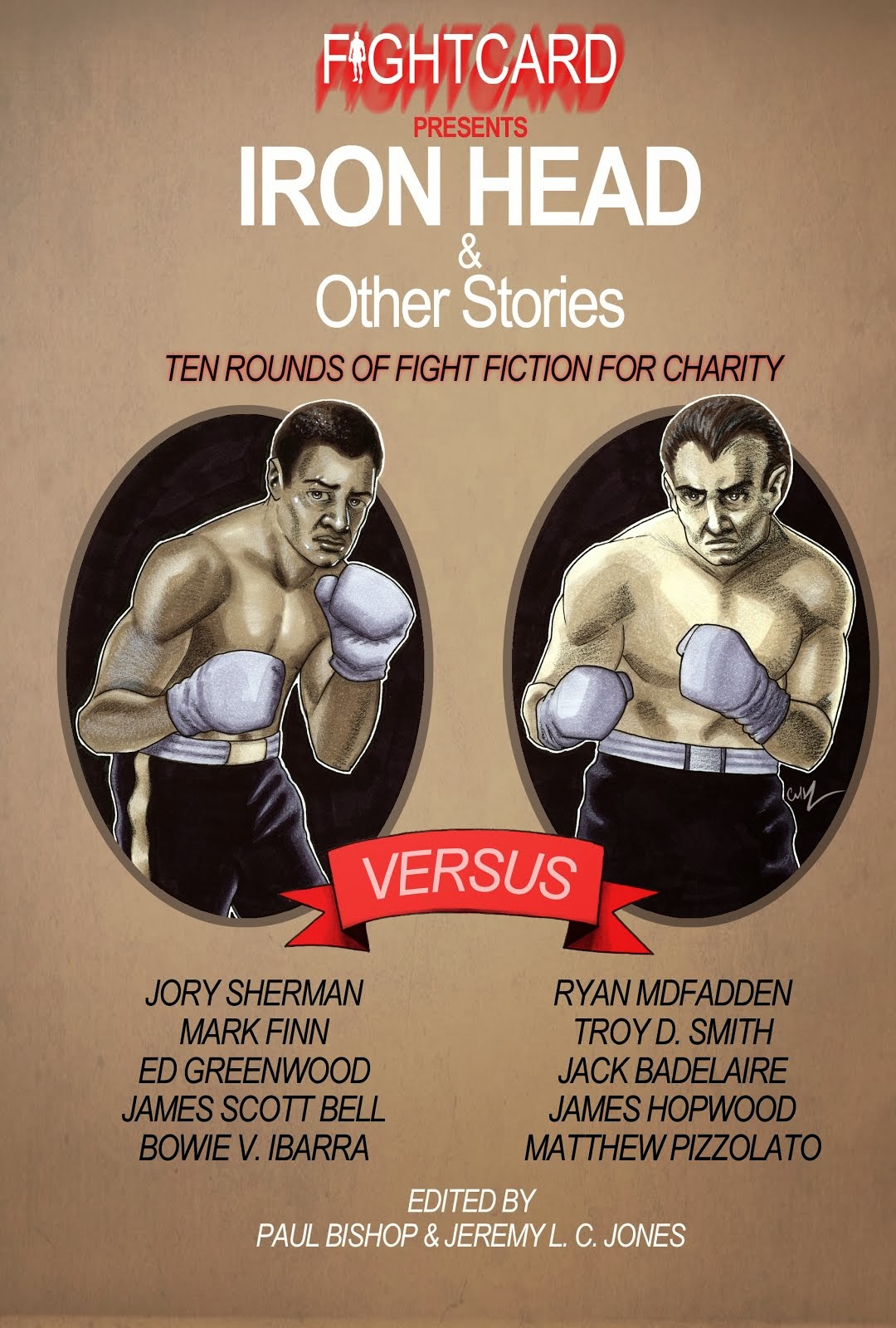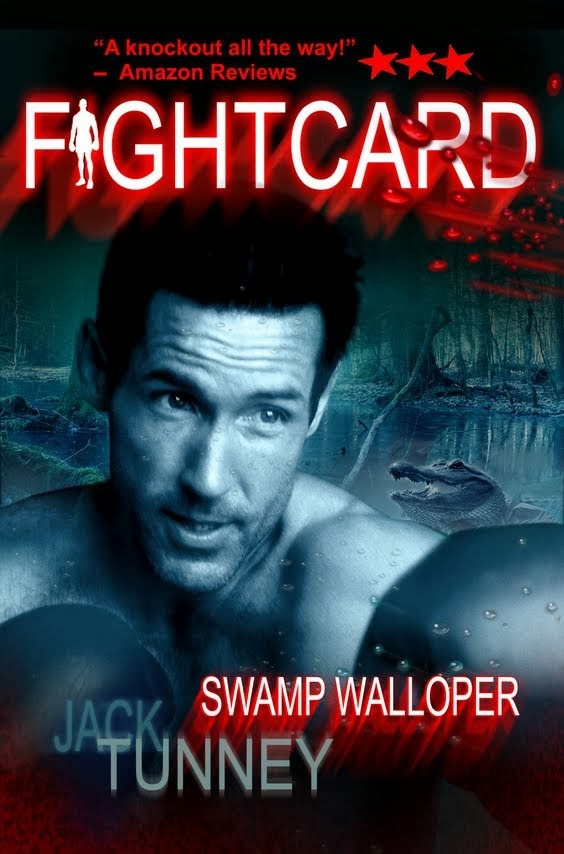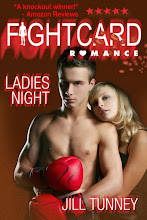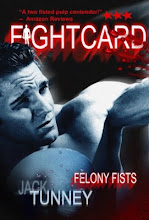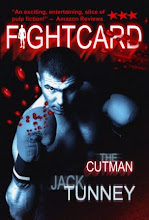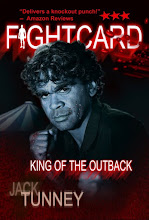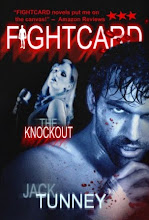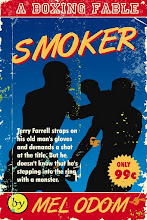I am a writer.
I write speculative fiction –
mainly Steamfunk, Urban Fantasy and Sword & Soul.
Recently, I have expanded my
writing into the Pulp genre of Fight Fiction, which was pretty much inevitable
because my novels contain lots of exciting action and fight scenes.
What is Fight Fiction. You ask?
Fight Fiction is comprised of
tales in which the fighting – whether it happens in a temple in Thailand, a
boxing ring in Las Vegas, a cage in Atlanta, or in a bar in New York City – is
not merely in the story to make it more exciting; or to add a different spin to
it. The fighting must be an integral part of both the story and its resolution.
Take the fighting out and you no longer have a story. Think Fight Club; Rocky; Blood and Bone; Kung-Fu Hustle; Million Dollar Baby; and Tai
Chi Zero.
My friend, renowned spoken word
artist XPJ Seven, once told me “Dude, I
like your fight scenes.”
“What
do you like about them?” I inquired.
“They’re
not like the fight scenes in most of the fiction I’ve read.” He replied,
his brow wrinkling as he scowled.
“What’s
wrong with those fight scenes?” I asked.
The wrinkles in XP’s brow
deepened into canyons as he frowned in disgust. “Dude…they’re wack!”
Can’t argue with the wisdom of
XP.
Thus, I write this as a helping
hand to my fellow writers who may struggle with writing fight scenes. If
writing fight scenes for you comes easy, please, keep reading; you’re already
here…you might as well. And – in the spirit of all things not wack – if you will be so kind as to contribute your wisdom to
this post, it will be greatly appreciated.
Writing fight scenes has always
been something I enjoy and that I believe I do fairly well. This is probably
due to the fact that I have been a student of indigenous African martial arts
for over forty years and I have been n instructor of those same martial arts
for nearly thirty years. I am also a lifelong fan of martial arts, boxing and
action films.
Thus, I share with you what little
I know about writing fight scenes in the following Fight Scene Plan, which
I hope will help guide you toward the light at the end of that dark, dank
tunnel called wackness.
Just remember – all good plans
are malleable. As my good friend, author Milton Davis, says, “A plan is a work in progress. It must be
adjusted and modified based on results. An inflexible plan will eventually lead
to failure.”
FIGHT
SCENE PLAN
SHOW,
DON’T TELL
I put this point first because
it seems to be the one most writers have difficulty with when writing a fight
scene.
Here is an example
of telling:
After taking eight punches and
several kicks to now vital areas all over her sinewy frame – such as her solar
plexus, spine and head – Harriet Tubman staggered backward, wailing in agony.
This is “telling” because the
punches and kicks are all lumped together, making it impossible to say, with
any certainty, how many blows Harriet actually suffered.
Furthermore, we cannot be sure
of exactly which body parts are suffering all the punishment, although we get a
grocery list of a few parts that might be getting damaged…or might not – who
knows?
Finally, what is Harriet doing
while she is taking that beat-down? Just accepting it all willy-nilly? Does she
throw a counterpunch? Beg for mercy? Scream “Feets don’t fail me now” and then haul ass? We don’t know. We
cannot see this scene. We cannot see Harriet. We’re just being told about it.
Wack.
SHOW
SEQUENCE, NOT SIMULTANEITY
It rarely makes sense to make
two different actions simultaneous in a fight scene.
Why?
Because a fight scene is loaded
with different sorts of actions, each of which takes a different amount of
time.
If one action takes a tenth of
a second and another takes two seconds, the action will feel distorted if the
author asserts that they happen simultaneously.
For example:
John Wilkes Booth ducked his
head and whirled to the right, simultaneously kicking furiously with his right
heel as he shouted “Harriet Tubman, you
just will not die, will you?”
Now, you can whirl to the right
pretty quickly. You can kick pretty quickly. But how long does it take to shout
‘Harriet Tubman, you just will not die,
will you’? All this action cannot happen simultaneously. So,
writing something like this? Wack.
ENFORCE
CAUSALITY
A Cause should be shown first, and then the Effect shown afterward.
Showing the Effect and then the Cause? Wack.
Case in point:
John Wilkes Booth ducked his
head and whirled to the right. He kicked furiously with his right heel as he
shouted “Harriet Tubman, you just will
not die, will you?” Just after he spotted Harriet throwing another punch at
him.
So, what happened first? Booth
saw Harriet throw another punch at him. However, that is shown last in the
passage. The Effect is shown first, followed by a long sequence of events:
Booth ducks his head; Booth spins to the right; Booth kicks; Booth shouts; only
after all that are we shown the Cause of it all.
SHOW
THE FASTEST ACTION FIRST
When you sequence a group of
actions that happen at roughly the same time, show those actions that happen
fastest before you show those that happen slowest.
Do not write the passage this
way:
The steambot was no longer a
threat to Harriet, as it lay broken in the dirt, wondering if it would ever see
its beloved creator – Mistress Nakamura – again, the very woman who had nurtured
it and taught it love, an agonizing scream escaped its metallic throat.
We see the steambot pondering
whether it would see its creator again and then we see it scream in
agony. A scream usually takes less time than a deep pondering, so it is better
to show the steambot scream first and then show it ruminate.
Showing the slower action
before the faster one? Wack.
FOR
EVERY ACTION, SHOW A REACTION
A fight scene should be written
in this order: Action then Reaction. The Steambot slams an elbow
into Harriet Tubman’s jaw; she staggers backward. Harriet whips a roundhouse
kick at the Steambot’s head; it blocks and swings a back-fist at her temple.
See? Action…Reaction. Writing
the character’s Reaction before the Action is backpedaling toward wackness.
Case in point:
Harriet staggered backward when
the steambot slammed its elbow into her jaw.
The Reaction –
staggering backward – took place before the Action – the elbow to the
jaw. Wack.
Each Action – Reaction should
have its own paragraph. This, however, is not always possible. Sometimes, the
sentences are too short to have their own paragraphs and can be combined. It’s
up to you how to format it.
The steambot exploded forward
with a powerful uppercut.
Harriet leaned backward to
evade the blow. A breeze slithered up her face as the steambot’s iron knuckles
swished past her nose.
Or
The steambot exploded forward
with a powerful uppercut. Harriet leaned backward to evade the blow. A breeze
slithered up her face as the steambot’s iron knuckles swished past her nose.
MAKE
IT HAPPEN IN REAL TIME
When writing your Action –
Reaction, be sure to make it happen in Real Time. When a fight is
happening, you see one punch and then right away, you see the response;
and then right away, you see the next punch. During a fight in Real
Time, you do not have time for such contemplations as this:
The steambot’s elbow slammed
into Harriet’s jaw. She staggered backward. She was hurt quite badly; perhaps
not as badly as when she shattered her shin against the thigh of that giant
knoll, but badly, just the same.
This should be written this
way:
The steambot’s elbow slammed
into Harriet’s jaw. She staggered backward.
CONTROL
THE PACE
Pace is important in a fight
scene.
It is not cinematic – and you want
your fight scene to play like a movie in the reader’s head – to show a nonstop
flurry of Actions and Reactions.
Even a warrior who possesses
extraordinary gifts like Harriet Tubman has to catch her breath.
A cinematic fight has ebbs and
flows in the pacing.
You show the faster parts of
the scene with short sentences that show only the Actions and
Reactions.
Use short sentences and phrases
to make reading flow run faster. Long, descriptive sentences slow the reading
pace.
In a fight scene, you want your
reader to roll with each punch; shift in his or her seat with each kick.
Fast reading pace is essential.
Use only a phrase, sentence, or – at most – two short sentences for each
action. You can also combine short phrases together, since each phrase will still
let the action move along:
Harriet paused, listening for
movement. The whisper of a footstep to her right. She whirled, exploded
forward, felt her knee connect with muscled flesh and then heard a soft thud as
Booth fell to the floor.
Conversely, reading flow can
also become bogged down if there are too many sentences of the same length one
after the other.
Cases in point:
He kicked. She ducked. He
chopped. She whirled.
Or
Harriet turned at the sound of
running feet. Booth crashed into her as she stood there. Her body struck the
table with a thundering crash. Splinters stabbed into the back of her neck.
Continue to avoid long,
rambling description, but vary your sentence and phrase length:
Running feet. Harriet turned.
Booth crashed into her, slamming her into the table with a thundering crash. A
low gasp escaped Harriet’s lips as splinters stabbed into the back of her neck.
You can also show the slower
parts of the scene with longer sentences that show Actions and Reactions
interspersed with dialogue and interior monologue.
To do otherwise? Wack.
FAVOR
COMPLETED VERBS OVER CONTINUING ACTION VERBS
Use simple past tense verbs,
such as kicked, ran or leapt rather than participles
such as kicking, running or leaping.
When you say Harriet
head-butted Booth, you imply that it happened quickly and the act is now over.
When you say Harriet was head-butting Booth, you imply that the act is
going on and on and on. A head-butt happens in a fraction of a second, so
writing “head-butting” causes the reader to envision the head-butt happening
over and over and over again. Or they envision it happening in slow motion.
Either way, it is not much like a fight anymore, is it? Wack.
Finally, remember that a good
fight scene is about momentum and rhythm.
Jackie Chan once gave me some
advice on choreographing a fight scene (yep, the Jackie Chan – I’ll tell you that story one day) that I now
use in my writing. “The rhythm of a fight
scene sells it. I use African and Japanese drum rhythms for my fights. Those
rhythms draw the audience in and make them love the fight.”
Each move should flow from
where the last one ended. If your hero throws a spinning back kick, where is
her weight when she lands? Is she standing straight or bent at the waist? In
what direction is her body leaning? The next blow she delivers should follow
the same line of momentum. If she kicked in a clockwise motion, her next kick
will also probably be clockwise.
Try to act out fight sequences
– or, if you live off a steady diet of Krispy Kreme donuts and Coca Cola, ask
someone else to do it – in order to figure out momentum and balance, which
creates rhythm. Throw a punch and observe how your weight shifts, or what area
of your body is exposed.
I often act out the entire
fight scene with my wife. We are both career martial artists, so, for us, it
comes easily. However, if you do not happen to have a spouse that is a martial
arts expert handy, watch movies for ideas (or call me – I choreograph fight
scenes for films, theater, comic books and novels…for a meager fee).
Finally, choose the type of
fights you want in your story. Do you want gritty, brutal fight scenes such as
the ones in Steven Seagal’s Above
the Law or in The Bourne
Identity (the 2002 movie, not the 1988 television miniseries)? Or do
you want Hong Kong Cinema-styled fights, such as the ones in The Matrix, Inception, or Crouching
Tiger, Hidden Dragon? Most readers will follow either style as long as they
make sense and are a good match with the genre you are writing in.
Recently, I joined a team of
stellar authors, who all write under the pen name Jack Tunney, as part of the Fight Card series imprints.
When I spoke to Paul Bishop,
who – along with author Mel Odom created the Fight Card concept – he expressed an interest in my protagonist,
Nick New Breed Steed and the story of
his coming of age as a fighter in the Adewale Wrestling Compound in Oṣogbo,
Oṣun State, Nigeria. I was happy because
I have always wanted to share with the world the fierceness, efficiency and
effectiveness of the indigenous African martial arts for self-defense, as well
as their transformative powers in the building of men and women with
self-discipline, courage and good character. Fight Card MMA was a perfect outlet for my unique brand of Fight
Fiction, which I am sure you will enjoy reading as much as I enjoyed writing
it.
In Fist Of Africa, readers will experience jaw-dropping action on the
mean streets of Chicago, in the sand pits of Nigeria and in cages in the Dirty South (Atlanta).





